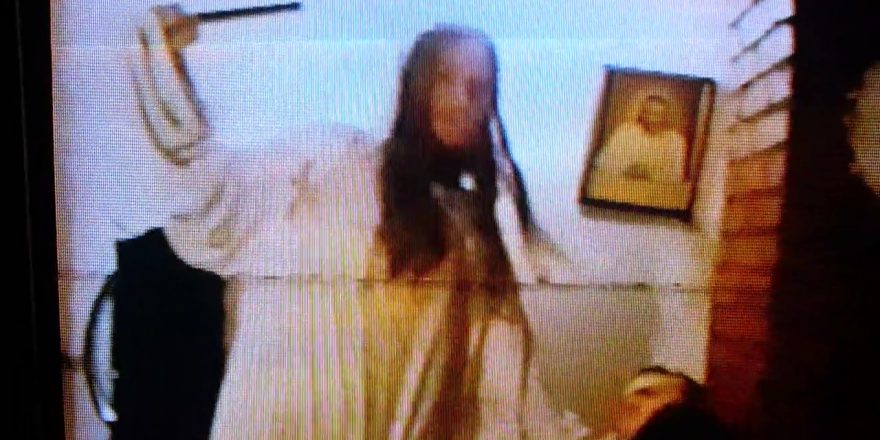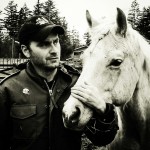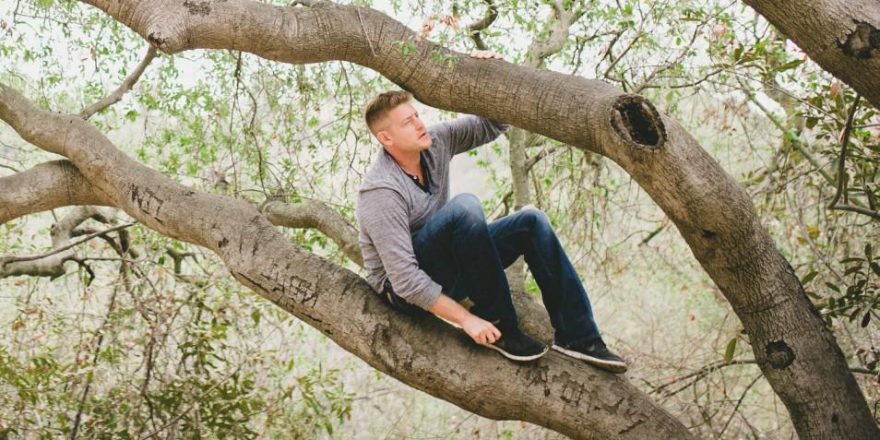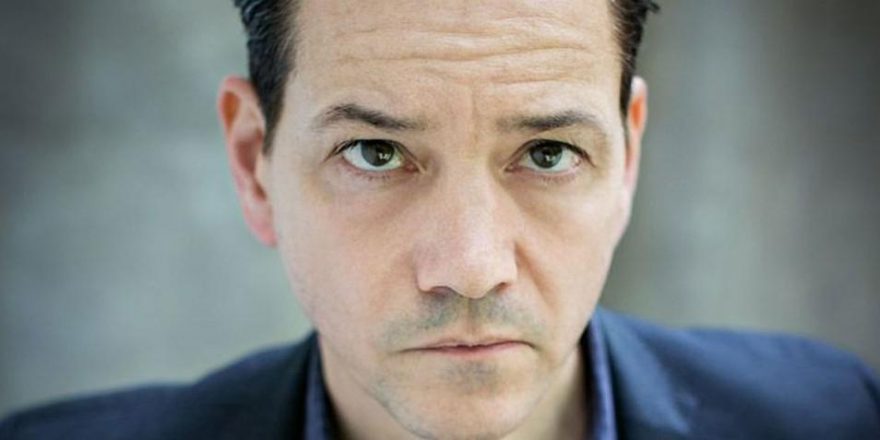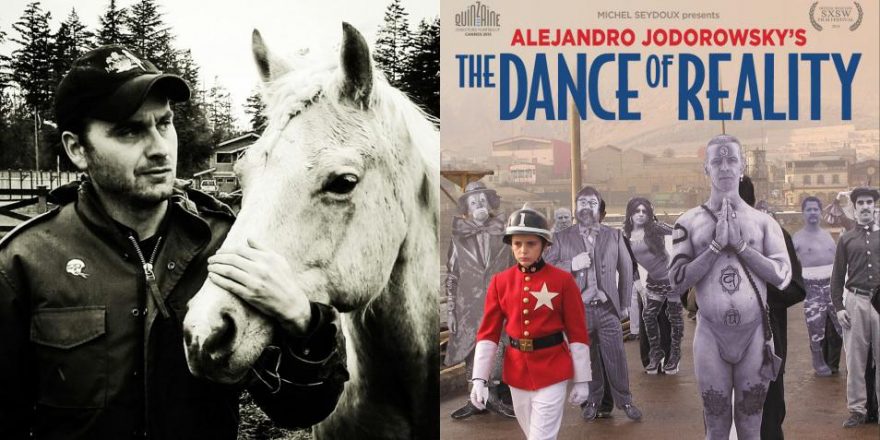There are two ways to interpret the phrase “I’ve seen worse,” and neither is great. Nevertheless, it remains the highest compliment anyone ever paid Polterchrist in earnest.
When I was 20, I was a construction worker in Seattle, WA. On a particularly wet day, I was digging out a water line in a six-foot ditch. Digging a ditch in the rain is really lame – it felt like my grave. In that moment, I thought, “I should make a movie or something.”
I always say I didn’t go to film school, but that’s not totally true. I found an ad in the back of The Stranger for something called “The Seattle Film Institute.” I signed up for night classes and went for about two weeks. The “institute” was in someone’s living room and I always showed up really dirty from work. Most people there were well read and articulate; I was desperate and feral. The “professor” actually told us on the first day not to get our hopes up about “making your own film” and also that if we did, it would never play Sundance. It was a lousy and discouraging couple weeks, so I quit.
Before a midnight screening of The Evil Dead, I saw the original trailer for Poltergeist and had a second epiphany: “I should make a movie called Polterchrist.”
So, armed with two weeks of film school and part of an idea, I set out to conquer Hollywood. Around this time, I met a fella by the name of Brady Hall. He was a van driver for a sign-supply company, but he also had an Éclair NPR 16mm camera and a pretty rippin’ beard. I can’t say he really looked like Jesus, but I also can’t say I’ve ever seen Jesus. So he was Jesus. Brady is smart. We had billions of ideas and lengthy conversations about dumb shit that should happen in the movie. He somehow wrote a screenplay off that mess. In it, a pensive Jesus Christ with a thirst for human blood is resurrected in the basement of a bowling alley. Same thing happens to Johnny Appleseed. It’s kinda weird. Every bowling alley in the world said “no,” except one: Kent Bowl, just south of Seattle. They allowed us to shoot every Sunday morning from 6am to 9am. We cast ourselves and all of our friends. None of us could act, not close. I was probably the worst. I played Derek, a paint-huffing tweaker / maintenance guy who invites his degenerate buddies to come party at the bowling alley after hours. Everyone pointed out what a bad a job I was doing on the first day. That’s when it hit me: I should’ve taken some kind of class or something. I didn’t have the gift and I didn’t know how to get it, so I continued to be bad at it. Easy decision.
We trudged through our “schedule,” shooting nights and weekends, paycheck to paycheck. We faked bowling alley interiors in friends’ basements and living rooms and shot aimless dream sequences out in the Eastern Washington desert. One time we recreated Jesus’ crucifixion, digging holes in the rock-hard desert floor to plant 10-foot crosses, killing scorpions and enduring 100 degree-plus temperatures only to discover we didn’t bring the microphone cable. That was cool. I’m pretty sure we all got heatstroke that day, as we were smart enough to bring no water. At all.

Another time, we decided to shoot these domesticated buffalo down by Tarp World. We underexposed that shit, never saw a frame. I don’t remember how they were gonna fit in the story, anyway.
We didn’t know what a real crew looked like. Brady and I pretty much ran a two-man mission, and it showed in every way. We killed our friends with back-yard special effects and splattered a “baby” with a bowling ball. There’s a lot of other stuff like that in there. Kent Bowl eventually asked us to leave.
Since we were shooting on film, we ran out of money all the time. There’s tons of hidden expenses in that game. We learned the cheapest thing to to do was request a “one-light work print” from the lab with no transfer and just watch the dailies on our thrift-store projector against Brady’s wall. The more footage we watched, the more we became aware of how bad this movie might really be. However, we hadn’t listened to any of the the audio yet – maybe that would save the show? It didn’t. Eventually we got a “grant” from from the Northwest Film Forum, which basically meant we were allowed to use their Steenbeck flatbed editor. And if that is something you’re unfamiliar with, it means we had to cut the whole film by hand, old school. Avid was pretty much the only digital editing system available at the time and it was way out of our price range. We’d never have been able to afford the digital transfer anyway.
So we cut the film by hand every damn day after work and deep into the night for eight months. When we finished, the movie was just shy of 50 minutes. FUCK! We thought we were making a feature. What went wrong?! Everything. Brady wrote some new scenes, we shot some stuff digitally, public access-style, and padded the rest up with some atmospheric bullshit. We added a five-minute scene with Brady’s real-life recluse roommate in a portable shitter; he just poops and talks to God, I think. It sucks. Whatever, we finally had what we wanted.
Polterchrist was now 72 minutes and rougher than a rodeo cowboy. But it was a feature film and we were legit now, right? Nope. We had to find a way to get the film off the flatbed editor, otherwise nobody but us would ever see it. We devised a plan to project the workprint and tape it to VHS without sound. Brady later MacGyver’d sound through the RCA jacks on the back of his shitty VCR. Surprisingly, it was pretty much in sync – a huge break. We scored it that way too. The score is probably the best thing we did in that movie.
We four-walled the film a handful of times and brought it out to New York City once. No one liked it, no one encouraged us, no one helped us and our movie sucked. We probably should’ve called it a career. We were nobodies at what felt like the bottom of the world. The nicest thing anyone ever said was, “I’ve seen worse,” and I’m pretty sure it was Brady who said that.
There is no moral to this story; here’s 25 seconds of Polterchrist.




